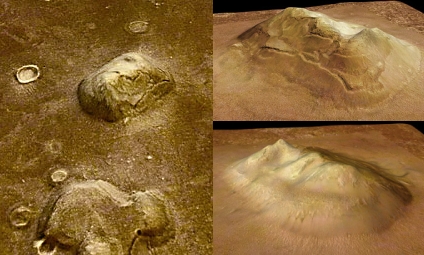

The phenomenon we call high tide occurs on opposite sides of Earth: it is high tide on the side closest to the moon, and also on the side farthest from the moon. Normally, the moon’s gravity governs predictable sea tides, literally pulling water up from the Earth’s surface. And as one astrophysicist commenter, pointed out in her own video response, “This is the North Pole, right? So where’s all the ice?” In the video, the moon also appears to be spinning, which is just wrong, since its orbit is tidally locked. What kind of place would Earth be then? It's hard to say. That means only one side of Earth would always face the Moon. In this case, Earth would be tidally locked, as all moons in the solar system are around their planets, he adds. The gravitational dynamic would be reversed, and Earth would be its satellite," he explains. "Exactly how massive it would be depends on its composition, and I believe there's a limit to how big a rocky body can get before liquifying. In that case, it could be called a super-Earth, Quock says. There might also be effects on Earth’s tectonic plates, causing increased volcanic and seismic activity,” says Quock.Īnd in the latter case, if the moon were 20 times bigger, it would be five times the diameter of Earth.

“If the former were the case, gravitational force would be 400 times greater (inversely proportional to distance), causing catastrophic flooding at high tide, compared to what we're presently used to. Look What Would Happen If We Nuked the MoonĮither the moon’s distance from us would be only about one-twentieth its actual distance (meaning it would be only about 12,600 miles away from Earth), or its diameter would be about 44,450 miles, about 20 times wider than the moon really is, Quock says.A Lunar Particle Collider Could Upend Physics.Most recently, the orbiter returned stunning images of what winter looks like on Mars.Don't Leave Yet. The orbiter searches for evidence of water, ice and complex terrain and scouts future landing sites for other missions. The spacecraft and its suite of instruments help NASA scientists study the Martian atmosphere, weather and climate, and how they change over time. The orbiter circles Mars every 112 minutes, flying from about 160 miles (255 kilometers) above the south pole to 200 miles (320 kilometers) over the north pole. The powerful camera was designed to capture detailed images of the Martian surface, including features as small as 3 feet (1 meter).

The HiRISE camera has been taking images of Mars since 2006, when the Mars Reconnaissance Orbiter began circling the red planet. NASA images showcase eerie beauty of winter on MarsĪnd last March, the Curiosity rover spotted a rock formation that resembled a flower on Mars. The frost here is a mixture of carbon dioxide ice and water ice and will disappear in a few months when spring arrives. Winter frost covers the colder, north-facing half of each dune (but not the warmer south-facing half). Sand dunes are moving across this landscape from top left to bottom right. This picture was taken far north of the equator just two days after the winter solstice when the Sun was just a few degrees above the horizon. Sometimes though, we would like to know what's going on in the dim wintertime areas. Usually, HiRISE takes pictures of well-illuminated terrain where there is plenty of light to produce clear images.


 0 kommentar(er)
0 kommentar(er)
